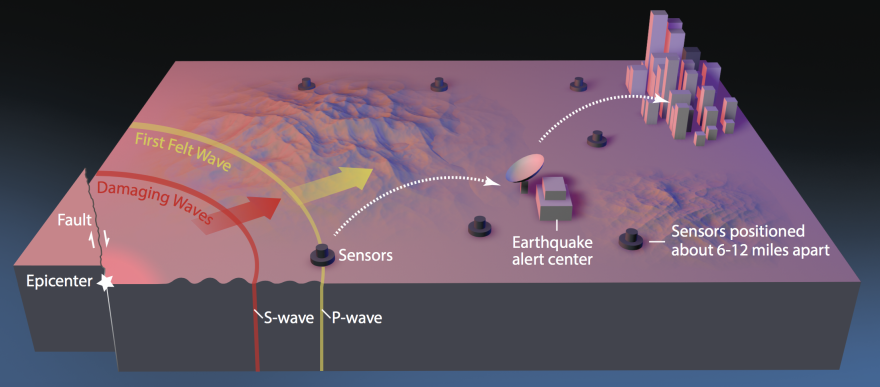This archival content was originally written for and published on KPCC.org. Keep in mind that links and images may no longer work — and references may be outdated.
Will California's earthquake warning system run the risk of alert fatigue?
The choice comes down to seconds — but even that could be the difference between safety and harm.
A new study from the U.S. Geological Survey lays out the dilemma facing scientists working on earthquake warning systems: Do you alert early and often, or wait until you know it's a strong temblor and possibly be too late?
The study, released this week, calculates the earliest possible time a warning system could let people know shaking was imminent. The findings could be used to decide protocols for ShakeAlert, the earthquake early warning system currently being developed for the West Coast.

What makes such timing hard is that when an earthquake first begins, there's no way to know if it will ultimately be small or large.
So there's concern about earthquake warning fatigue, particularly in regions like Southern California where minor earthquakes are common.
“The conundrum is that little earthquakes are much more common than big ones," said USGS seismologist Sarah Minson in a news release about the findings of the study.
The findings
Seismologists took the example of an earthquake on San Andreas Fault that starts in Northern California. The simulation of a 8.o magnitude temblor has the fault rupturing toward San Francisco.
They found the earliest possible time San Francisco residents could be warned was about 48 seconds ahead of the strong shaking. If they waited for strong shaking to begin, there would be only 8 seconds of warning.


